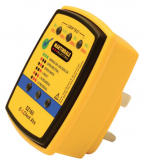Guda
Superstrut Strut
- Joined
- Nov 19, 2019
- Messages
- 516
My ground is crazy tough to dig deep. I am pretty sure there would be no way to pound in 8' of copper. Even with all the ways I have looked up. Can I just dig a hole with my backhoe & then put in the ground rod.
Will back filling a hole be the same as pounding in the rod?
Is getting it close to the equipment the only consideration?
Will back filling a hole be the same as pounding in the rod?
Is getting it close to the equipment the only consideration?




